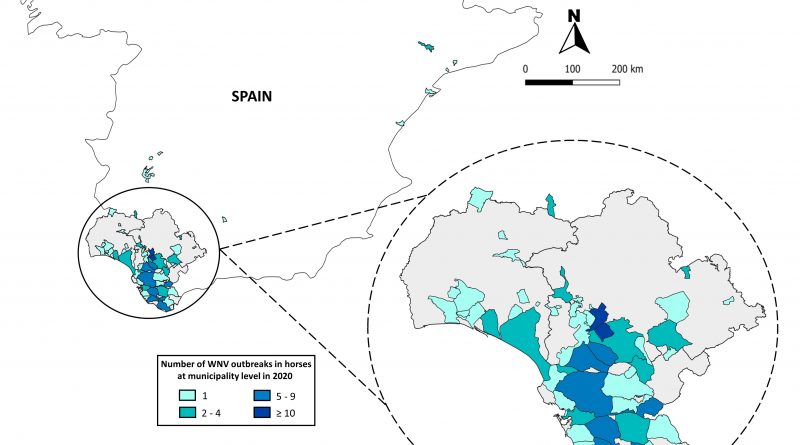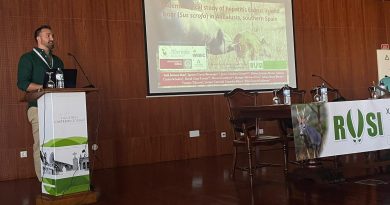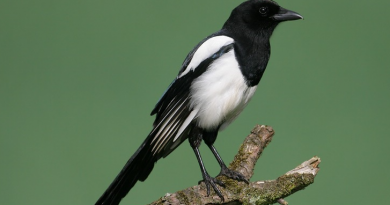High exposure of West Nile virus in equid and wild bird populations in Spain following the epidemic outbreak in 2020
Transboundary and Emerging Diseases
Abstract
A cross-sectional study was conducted to assess the circulation and risk factors associated with West Nile virus (WNV) exposure in equine and wild bird populations following the largest epidemic outbreak ever reported in Spain. A total of 305 equids and 171 wild birds were sampled between November 2020 and June 2021. IgG antibodies against flaviviruses were detected by blocking ELISA (bELISA) in 44.9% (109/243) and 87.1% (54/62) of unvaccinated and vaccinated equids, respectively. The individual seroprevalence in unvaccinated individuals (calculated on animals seropositive by both bELISA and virus microneutralization test (VNT)) was 38.3% (95%CI: 33.1-43.4). No IgM antibodies were detected in animals tested (0/243; 0.0%; 95%CI: 0.0-1.5) by capture-ELISA. The main risk factors associated with WNV exposure in equids were age (adult and geriatric), breed (crossbred) and absence of a disinsection program on the facilities. In wild birds, IgG antibodies against flaviviruses were found in 32.7% (56/171; 95%CI: 26.8-38.6) using bELISA, giving an individual WNV seroprevalence of 19.3% (95%CI: 14.3-24.3%) after VNT. Seropositivity was found in 37.8% of the 37 species analyzed. Species group (raptors), age (>1 year old) and size (large) were the main risk factors related to WNV seropositivity in wild birds. Our results indicate high exposure and widespread distribution of WNV in equid and wild bird populations in Spain after the epidemic outbreak in 2020. The present study highlights the need to continue and improve active surveillance programs for the detection of WNV in Spain, particularly in those areas at greatest risk of virus circulation.




